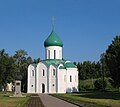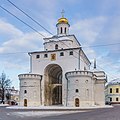| Bib | Name | Location | Creation year | Comments | Photo | Category on Commons |
|---|
| 1. | The Saint Sophia Cathedral, Kyiv | Kyiv | 1017–1022 or before 1037 [1] | One of the two oldest surviving buildings of the Kievan Rus'. [1] The exterior was considerably modified in the 17th and 18th centuries. | 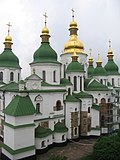 | Category |
| 2. | The Golden Gate, Kyiv | Kyiv | 1037 | By 1982, the gate was a ruin, and, with the exception of the lowest parts of the walls, it was reconstructed in 1982. |  | Category |
| 3. | The Dormition Cathedral of the Kyiv Pechersk Lavra | Kyiv | 1073–1089 | Destroyed in 1941, reconstructed in 2000. The exterior was considerably altered in the 18th century. | 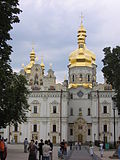 | Category |
| 4. | The Trinity Church of the Kyiv Pechersk Lavra | Kyiv | ca 1106 | The exterior was considerably altered in the 18th century. |  | |
| 5. | The Saint Michael Church of the Vydubychi Monastery | Kyiv | 1070–1088 | Only the western side. |  | |
| 6. | The Church of the Saviour at Berestove | Kyiv | Beginning of the 11th century | Only the western side. |  | Category |
| 7. | The Saint Cyril Church of the St. Cyril's Monastery | Kyiv | 1140–1146 | Exterior was strongly altered. | 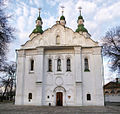 | |
| 8. | The Saint George's Cathedral | Kaniv | 1144 | Only the walls. |  | |
| 9. | The Saint Basil Church | Ovruch | ca 1190 | Collapsed in 1846, restored in 1907–09. |  | |





























